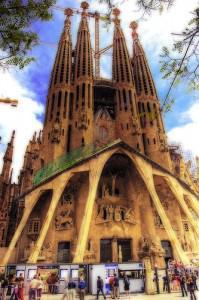 Green building has several connotations such as being expensive, unattainable, and too modern in its styling. However, people having been incorporating “green” techniques for centuries. Many of these are low or NO cost options, such as building orientation, trees for shading, and thick exterior walls for insulation during hot and cold weather.
Green building has several connotations such as being expensive, unattainable, and too modern in its styling. However, people having been incorporating “green” techniques for centuries. Many of these are low or NO cost options, such as building orientation, trees for shading, and thick exterior walls for insulation during hot and cold weather.
Obviously the advent of air conditioning, space heating, and artificial lighting has led to buildings consuming more energy. Before cooling large space was an available technology, architects and builder employed materials that reduced heat gain in the summer. In addition, nature provided inspiration for structures. Today referred to as biomimicry, the concept was just plain old good design practices over a hundred years ago. One of the prime examples of using nature to guide design can be seen in Africa. By modeling the building (Eastgate Centre)Â after termite mounds, this structure remains at a fairly constant internal temperature without an HVAC system. Air flows through the building, preventing stagnation.
In the Western world, Antonio Gaudi often elicits images of the unfinished Sagrada Familia (Sacred Family, seen in the picture to the left) which is located in Barcelona. His architecture is iconic. In addition, by mimicking natural forms, Gaudi’s buildings use resources in a manner consistent with both nature and minimal energy consumption. Many of the buildings constructed prior to the advent of heating and cooling systems took advantage of the currents and airflow. Structures fit more intimately into their surroundings. The advent of skyscrapers in the late 19th century led to greater density within cities, a positive move in the sense of using less land and making accessibility a greater prior. However, these structures require massive inputs of energy to heat, cool, and illuminate the interiors. Gaudi’s forms often brought natural light and accentuated the flow of air, not inhibiting it.
Gaudi and more recently the field of biomimicry represent ways in which organic forms and innovation can help further the aims of sustainability. Some critics reject the lack of uniformity in both these fields. To build sustainably does not require outlandish approaches, but it does need the inventiveness that Gaudi exhibited.
[Image source]

